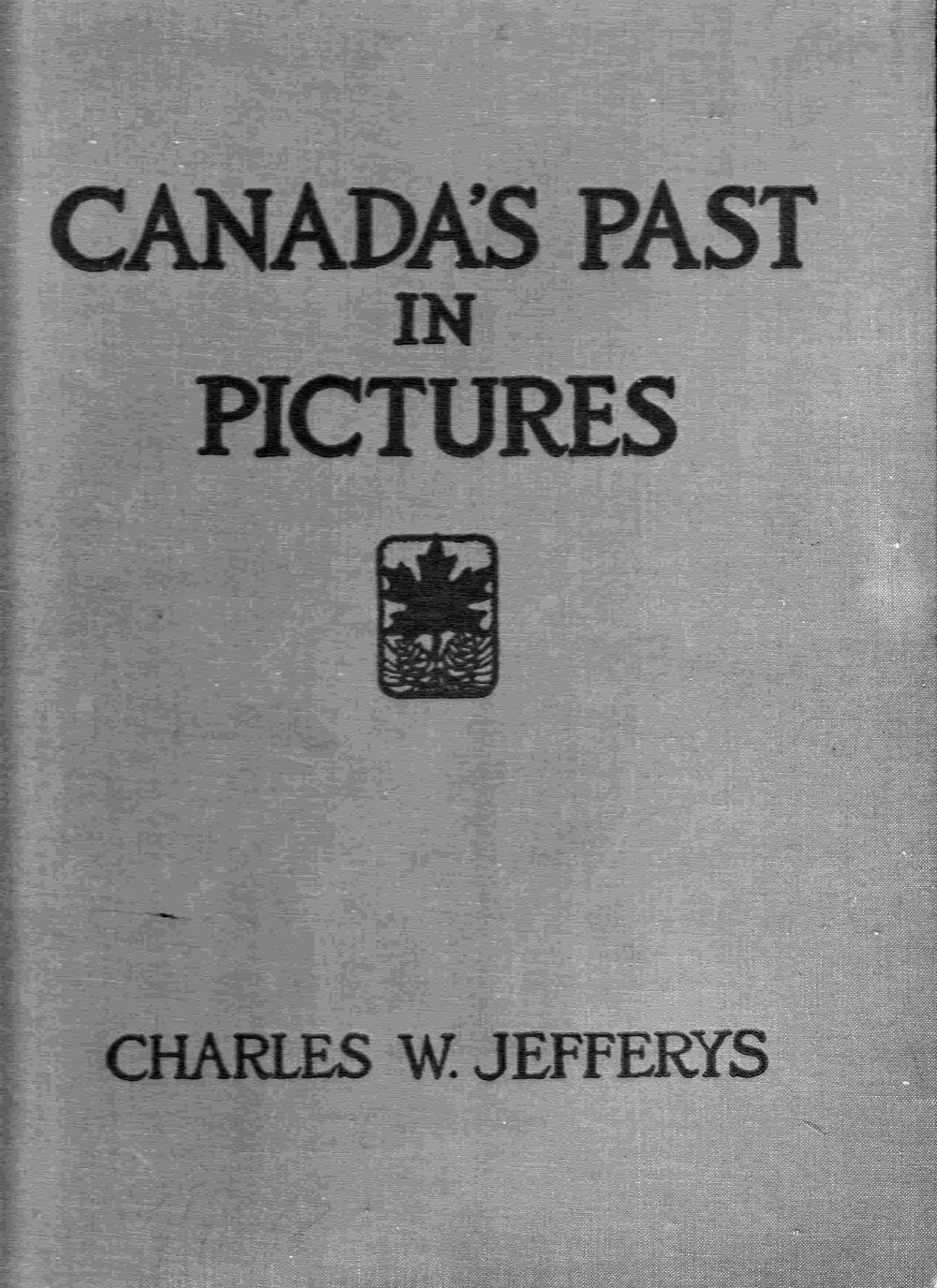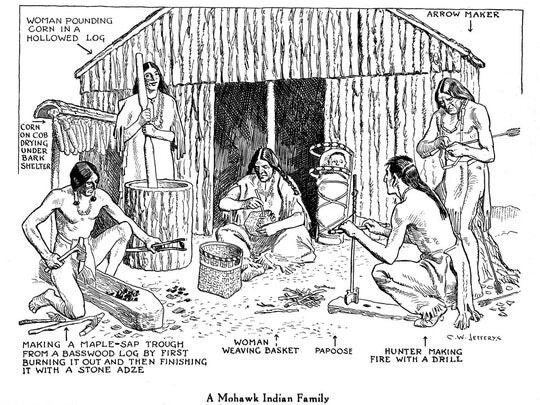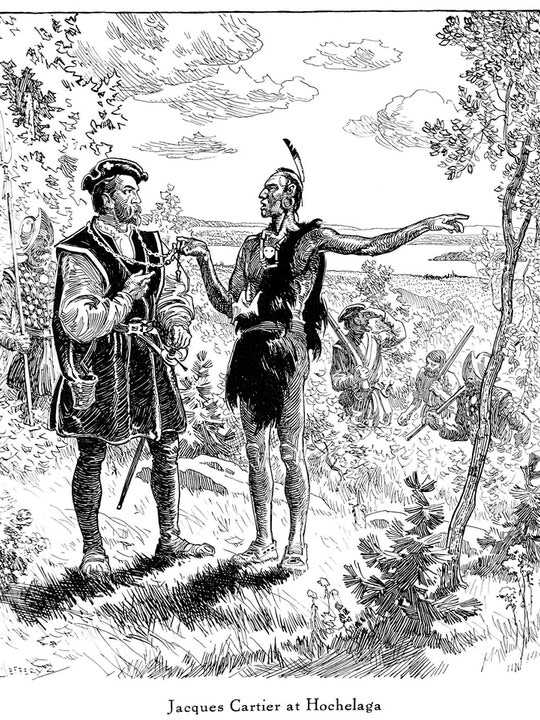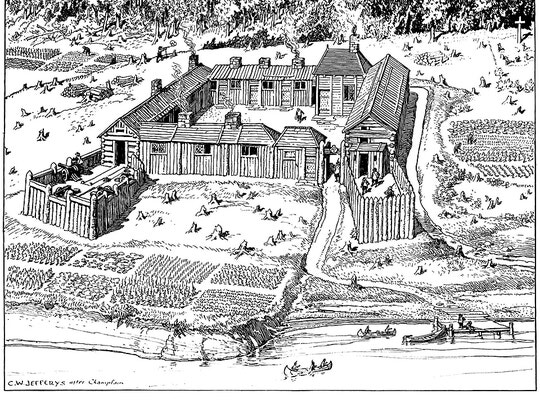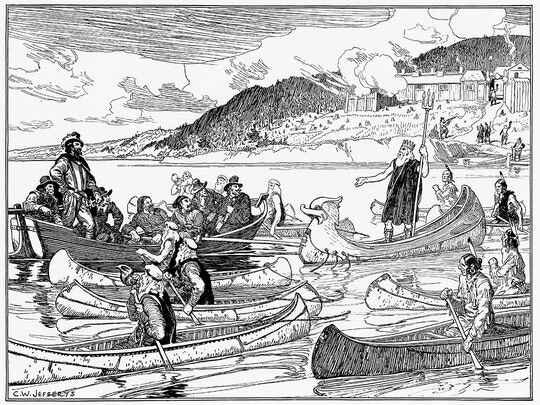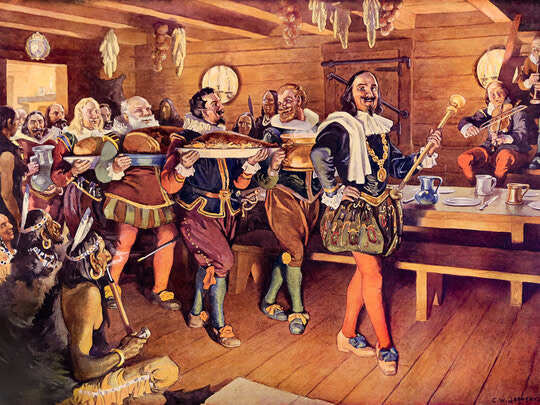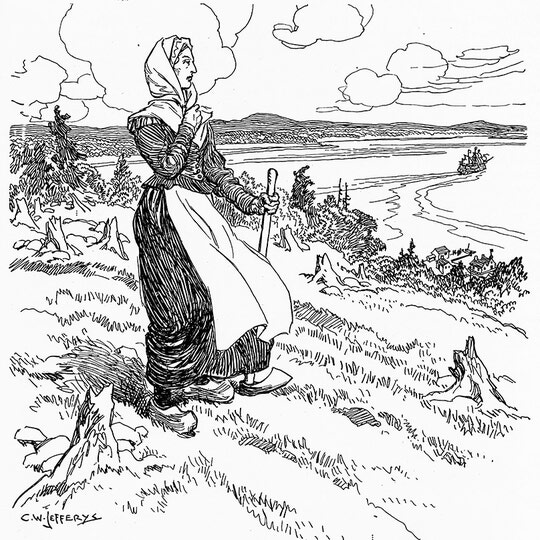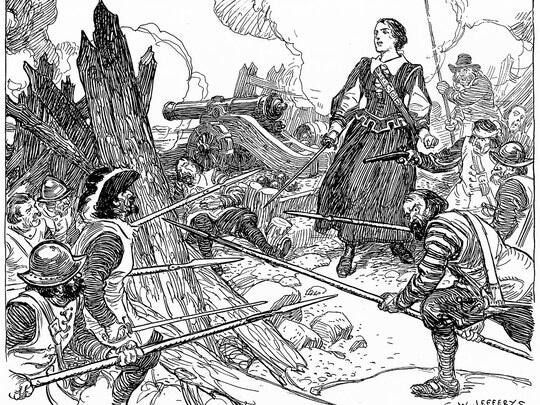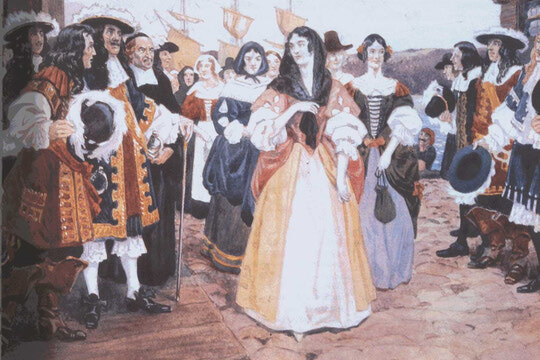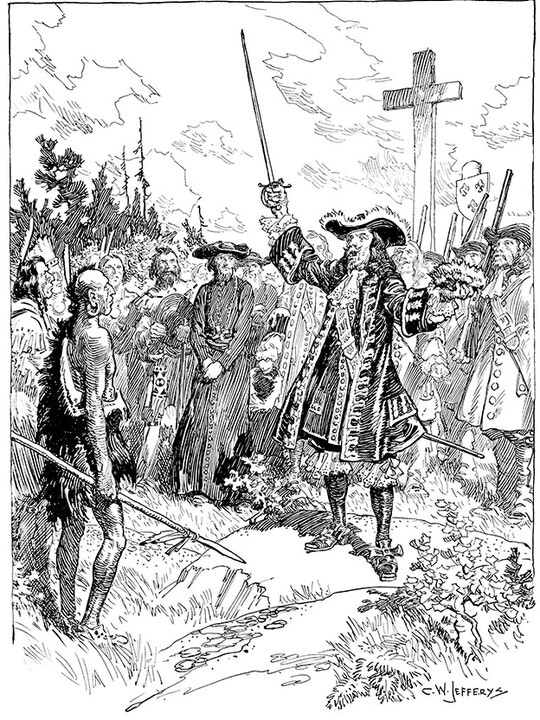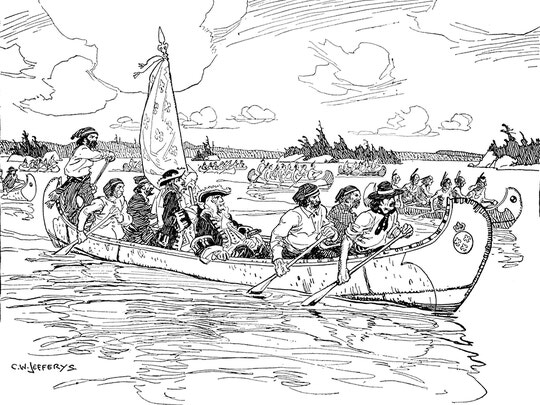Canada’s Past in Pictures
Title: Canada’s Past in Pictures.
Author: C. W. Jefferys
Publisher: Toronto, Ryerson, 1934. 132 p. Illus.
Browse Images
- Title page - "Written and illustrated by Charles W. Jefferys, R.C.A., LL.D."
- Title page verso – “Copyright, Canada, 1934, by C.W. Jefferys”
- A Mohawk Indian Family
- The New Found Land
- Jacques Cartier Erects a Cross at Gaspe
- Jacques Cartier at Hochelaga
- The Habitation of Port Royal
- The First Play in Canada
- The Order of Good Times
- The Habitation of Quebec
- Champlain's Fight With the Iroquois
- Champlain on the Ottawa
- Champlain on Georgian Bay
- Champlain a Prisoner
- A Jesuit Preaching to the Indians
- Marie Hebert, The Mother of Canada
- Maisonneuve Carries a Cross to the Summit of Mount Royal
- Maisonneuve's Fight With the Indians
- The Meeting of Francoise Marie Jacquelin and Charles De La Tour
- Madame De La Tour Defends Her Husband's Fort
- Indians Trading With The French
- The Martyrdom Of Brebeuf And Lalemant
- The Arrival of the Brides
- St. Lusson At Sault Ste. Marie
- Mother Marie De L'Incarnation
- Frontenac On The Way To Cataraqui
- Frontenac Joins In The War Dance
- Hennepin At Niagara Falls
- Madeleine De Vercheres At The Gate Of The Fort
- The Relief of Fort Vercheres
- In Sight Of The Western Mountains
- The Founding of Halifax
- The Battle of Ticonderoga
- Wolfe Chooses His Battle-Ground
- Wolfe At The Battle of The Plains of Abraham
- Captain Cook At Nootka
- Loyalists On The Way To Canada
- Loyalists Resting On Their Way Up The St. Lawrence
- Loyalists Drawing Lots For Their Lands
- Mackenzie At The Arctic
- Overland To The Pacific
- The Mapmaker of The West
- Brock And Tecumseh
- Brock At Detroit
- Brock's Ride To Queenston
- The Battle Of Stoney Creek
- The Battle of Chateauguay
- Rebels Drilling in North York
- A Country Dance In The Forties
- Rev. James Evans Teaching Indians His System Of Cree Syllabic Writing
- Father Lacombe And The Blackfeet
- The Battle of Batoche
Woman pounding corn in a hollowed log.
Corn on cob drying under bark shelter.
Arrow maker.
Making a maple sap trough from a basswood log by first burning it out and then finishing it with a stone adze.
Woman weaving a basket.
Papoose.
Hunter making.
Many men had dreamed of a way to the Orient by a western voyage. Among them was another native of Genoa, Giovanni Cabotto, or John Cabot,* as later he came to be called.
Throughout the early years of the 16th century hundreds of fishing vessels flocked from the western ports of England, France and Spain to Newfoundland and the Gulf of St. Lawrence. Foremost among these hardy and semi-piratical sea rovers...
Cartier's own account tells us that the Indian chief, seizing the silver chain of the whistle hanging round his neck, which he used for giving signals on ship-board, and pointing to the handle of a dagger made of copper gilt like gold...
The Habitation of Port Royal was the first permanent white settlement in America, north of the Spaniards. We have some scanty descriptions of it in the writings of Champlain and Lescarbot, and a few references in the Jesuit Relations...
This play, entitled The Theatre of Neptune, was performed on the 14th of November, 1606, to welcome the return of Poutrincourt, the governor, from a voyage of exploration.
In order to keep up the spirits of the colonists of Port Royal during the winter of 1606-1607, a sort of club was organized called "The Order of Good Times". Each member had to take his turn in providing the dinner...
The picture, which is redrawn from the engraving in Champlain's works, is intended to show the position of the Habitation and to give some idea of the materials and the methods used in its construction.
It was Champlain's great desire to explore the country whence came the great river on whose banks he had planted the settlement of Quebec, and to search for a passage which would lead to the Western Sea.
In 1613 Champlain made a journey up the Ottawa River, at that time unknown to the white man. Like all early explorers, Champlain hoped that it led to the sea - that sea which stretched to the Far East of Asia.
The picture shows Champlain looking out over the lake to the west, from one of the many islands that fringe the shore of Georgian Bay, while one of his Huron guides points out the course to him.
The picture shows Champlain standing on the deck of one of the departing English vessels, gazing at the rock of Quebec where the English flag now flew over the settlement he had founded...
The conversion of the Indians to Christianity was one of the earliest and most important objects of the French in Canada. Champlain, who was sincerely pious, declared that the salvation of one soul was of more value than the conquest of an empire.
In the picture she is seen watching from one of her fields on the edge of the cliff the departure of the last English ship bearing away the French colonists.
In the picture, Maisonneuve is seen on his way, preceded by the priest and the members of his company. Behind him is his servant, carrying his master's cloak, on which may be seen embroidered a white Maltese Cross...
Montreal, to-day the largest city in the Dominion, was founded as a mission station in 1642 by a little band of pious devotees, who planted this outpost of the Christian faith in the heart of a savage, heathen world.
The story of La Tour and his bride sounds more like romantic fiction than sober historic fact, and indeed, much of it seems to be only vague legend, set going by the tales told by La Tour's rival, De Charnisay...
Inspired by their heroic mistress, the defenders held out against assaults continued day and night until toward the evening of the fourth day, Easter Sunday, Charnisay's men succeeded in making a breach in the palisades and entered the fort.
All along the shores of the Gulf and the River St. Lawrence, during the later years of the 16th century and the first half of the 17th century, a brisk trade was carried on with the Indians for furs.
They were led back to St. Ignace and put to the dreadful tortures which the Iroquois inflicted upon their prisoners. Brebeuf suffered for four hours, when a chief cut out his heart and ended his agony. Lalemant, in spite of his frail physique...
But there could be no permanent homes without wives, and unmarried women were scarce in Canada. So, in the next few years, several companies of marriageable young women were shipped by the king to find husbands in the colony.
St. Lusson holds in one hand a sod of earth. This was part of the procedure in taking possession of land. This ceremony was performed by discoverers and often also by seigneurs on entering on territory granted them by the king.
In the picture, Mother Marie wears the black and white robes of the Ursuline Order of the period, as shown in pictures of the time. The Indian girls are dressed partly in the clothing of the French children of that day and partly in their own...
Late in June, 1673, Frontenac set out from Montreal on his journey up the St. Lawrence. With him there were about 400 men; habitants, voyageurs, Indians, old soldiers of the Carignan regiment...

